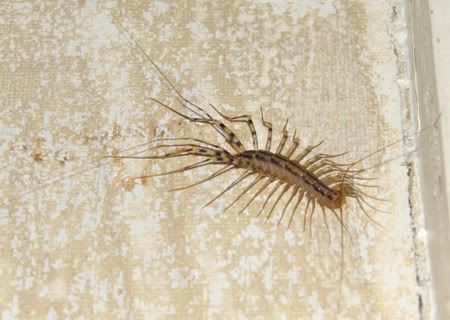365 Urban Species. #147: House Centipede

photo by cottonmanifesto
Urban species #147: House centipede Scutigera coleoptrata
Well, if you made it past the photograph you're better than most. No other animal, pound for pound, can excite and distress people quite like the house centipede. It appears suddenly, fifteen pairs of legs propelling it across the wall at great speed. Even people who are fully aware that this animal is a beneficial member of the household, eating small flies and other insects, will kill it on sight.
Apparently indigenous to the Mediterranean (a region of origin for numerous urban species) and then accidentally transported to subtropical America, the house centipede has made the building by building journey to northern states. Like house mice, house flies, and several species of cockroach, they are always found in association with humans in their new temperate range. The great indoors serves as a series of subtropical islands, temperature and humidity controlled for the primates that created it.
Unlike other centipedes, house centipedes' body segments are fused; also its legs are unusually long, and are of different legths. Each of these adaptations probably adds to the creature's running speed. The racing stripes probably don't make it any faster, but help make it a distinctive and attractive animal. Still with me?
All centipedes are predators that hunt with a pair of legs that have been modified into venomous fangs. House centipedes are reputed to be capable of delivering a bee sting-like bite to humans, but I have yet to hear a first person account. For my part, I have handled them without incident--your results may vary. If indeed they can pierce human skin and inject venom, an allergic reaction could result, as in any envenomation.
House centipedes are a personal favorite, and I have written about them previously here: http://urbpan.livejournal.com/60469.html
and
here: http://urbpan.livejournal.com/64272.html
and centipedes in general
here: http://urbpan.livejournal.com/tag/centipede